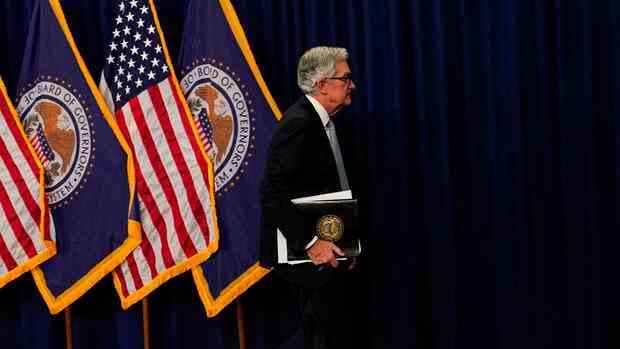On Wednesday and Thursday, the US Fed and the European Central Bank (ECB) must once again convince the markets that the tightening of monetary policy is not over yet. That interest rates have to rise further to prevent inflation from spiraling out of control again. That it’s too early to speculate on the big turnaround.
If they fail to do so, markets will look forward to celebrating the end of tightening, and with it, financing conditions for companies and investors will become easier – and that would drive prices up. Once again, it is important that the central banks strike the right note.
It’s the year of probation – the inflation crisis is not over yet, even if rates are falling. With any luck, inflation will not hit the 2% target by the end of this year, but it will be close enough not to attract much attention. It is therefore a good time to take stock: what did the central banks do wrong, what did they do right?
What was wrong was that in 2021 they still gave the impression that they were not taking the dangers of inflation seriously. Saying the price increase was “temporary” was dangerous. It was widely understood that the problem would disappear quickly and without major central bank intervention. In fact, inflation is now passing, but it will take time and it cannot be done without tighter monetary policy.
Top jobs of the day
Find the best jobs now and
be notified by email.
Early critics such as the US economist Mohamed El-Erian and the then Bundesbank President Jens Weidmann also had no crystal ball that would have announced the coming rise in prices. But they rightly complained that central bankers such as Fed Chair Jerome Powell and ECB chief economist Philip Lane, for example, did not take the risk of inflation seriously enough.
>> Read here: Change of course in monetary policy – who will cut interest rates first?
This cost the central bankers credibility, which they had to regain in 2022 with rapid interest rate hikes. Measured against the inflation expectations discernible on the capital market, they have succeeded relatively well.
ECB cannot provide cheap oil
The other question is how much inflation the central banks could have actually prevented in 2022. They cannot fight the effects of Covid and war: they lead to relative price changes that cannot be prevented. Attempting to use the crowbar to counteract this would have led to price reductions in some areas, causing great damage.
Much of the inflation, particularly in Europe, came from the supply side, from rising costs for products such as microchips, and especially from the energy sector.
In the USA, on the other hand, in addition to supply shortages, the government’s very generous spending policy also played an important role. She increased the demand. In the US, on the other hand, earlier intervention by the Fed would probably have worked. It was more difficult in Europe: the ECB cannot provide cheap oil.
Central banks can hardly prevent relative prices from changing. They shouldn’t either: prices have the function of controlling scarcities.
However, if some prices, for example for energy, rise sharply in relation to the others, other prices would have to fall so that inflation does not occur on average. But can monetary policy really aim to lower prices in some areas? The economic damage from this, the effects on production and jobs, can be great.
>> Read here: Fed Vice Chair Brainard as top economist in the White House
In this situation, it was the task of the central banks, above all, to prevent inflation from taking on a life of its own. This task was more urgent in the USA, where demand, a tight labor market and rising wages and salaries played an important role, than in Europe, where the danger of a wage-price spiral has not yet been completely averted, but has not clearly disappeared either data can be read.
Measured against the respective situation, the Fed rather than the ECB hesitated too long to combat inflation.
What happens after the big crisis?
In wartime everything is uncertain. But the chances are good that inflation – with a delay and pressure from the central banks – will actually fall.
Then you have to realize: The temporary increase to ten percent has nothing to do with the inflation 100 years ago, when the printing press was used to finance the burdens of the First World War.
The comparison with the 1970s, when strong trade unions demanded high wage increases, should also be viewed with some distance as incorrect. Nevertheless, inflation has already cost a lot – after all, these are the costs of plague and war.
As the year progresses, more and more attention is likely to turn to what happens after inflation subsides. A return to stagnation, a period of low growth, low inflation and low interest rates? This is what economist Olivier Blanchard believes, for example, who was one of the first to warn of rising inflation in 2021.
Or will it stay with stronger price dynamics, as many other experts expect? Perhaps the specter of price increases is currently being overestimated just as it was initially underestimated two years ago.
More: ECB Director Panetta against committing to sharp rate hikes
